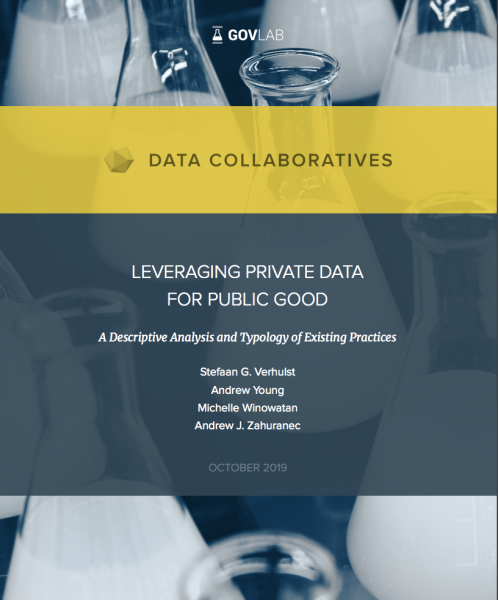Blog post by Andrew Young, Andrew J. Zahuranec, Stephen Burley Tubman, William Hoffman, and Stefaan Verhulst at Data & Society: “To deal with complex public challenges, organizations increasingly seek to leverage data across sectors in new and innovative ways — from establishing prize-backed challenges around the use of diverse datasets to creating cross-sector federated data systems. These and other forms of data collaboratives are part of a new paradigm in data-driven innovation in which participants from different sectors provide access to data for the creation of public value. It provides an essential new problem-solving approach for our increasingly datafied society. However, the operational challenges associated with creating such partnerships often prevent the transformative potential of data collaboration from being achieved.
One such operational challenge relates to developing data sharing agreements — through contracts and other legal documentation. The current practice suffers from large inefficiencies and transaction costs resulting from (i) the lack of a common understanding of what the core issues are with data exchange; (ii) lack of common language or models; (iii) large heterogeneity in agreements used; (iv) lack of familiarity among lawyers of the technologies involved and (v) a sense that every initiative needs to (re)invent the wheel. Removing these barriers may enable collaborators to partner more systematically and responsibly around the re-use of data assets. Contracts for Data Collaboration (C4DC) is a new initiative seeking to address these barriers to data collaboration…
In the longer term, participants focused on three major themes that, if addressed, could steer contracting for data collaboration toward greater effectiveness and legitimacy.
Data Stewardship and Responsibility: First, much of the discussion centered on the need to promote responsible data practices through data stewardship. Though part of this work involves creating teams and individuals empowered to share, it also means empowering them to operationalize ethical principles.
By developing international standards and moving beyond the bare minimum legal obligation, these actors can build trust between parties, a quality that has often been difficult to foster. Such relationships are key in engaging intermediaries or building complex contractual agreements between multiple organizations. It is also essential to come to an agreement about which practices are legitimate and illegitimate.
Incorporation of the Citizen Perspective: Trust is also needed between the actors in a data collaborative and the general public. In light of many recent stories about the misuse of data, many people are suspicious, if not outright hostile, to data partnerships. Many data subjects don’t understand why organizations want their data or how the information can be valuable in advancing public good.
In data-sharing arrangements, all actors need to explain intended uses and outcomes to data subjects. Attendees spoke about the need to explain the data’s utility in clear and accessible terms. They also noted data collaborative contracts are more legitimate if they incorporate citizen perspectives, especially those of marginalized groups. To take this work a step further, the public could be brought into the contract writing process by creating mechanisms capable of soliciting their views and concerns.
Improving Internal and External Collaboration: Lastly, participants discussed the need for actors across the data ecosystem to strengthen relationships inside and outside their organizations. Part of this work entails securing internal buy-in for data collaboration, ensuring that the different components of an organization understand what assets are being shared and why.
It also entails engaging with intermediaries to fill gaps. Each actor has limitations to their capacities and expertise and, by engaging with start-ups, funders, NGOs, and others, organizations can improve the odds of a successful collaboration. Together, organizations can create norms and shared languages that allow for more effective data flows.
One such operational challenge relates to developing data sharing agreements — through contracts and other legal documentation. The current practice suffers from large inefficiencies and transaction costs resulting from (i) the lack of a common understanding of what the core issues are with data exchange; (ii) lack of common language or models; (iii) large heterogeneity in agreements used; (iv) lack of familiarity among lawyers of the technologies involved and (v) a sense that every initiative needs to (re)invent the wheel. Removing these barriers may enable collaborators to partner more systematically and responsibly around the re-use of data assets. Contracts for Data Collaboration (C4DC) is a new initiative seeking to address these barriers to data collaboration…(More)”.

